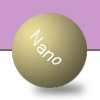|
 The
NIST Director has funded a Competence Award to develop the
initiative in tissue engineering. In collaboration with the
Biotechnology Division, we are developing combinatorial libraries
to serve as reference materials (test patterns) and genetically
engineered cells capable of fluorescently indicating their
state in real time (indicator cells). The
NIST Director has funded a Competence Award to develop the
initiative in tissue engineering. In collaboration with the
Biotechnology Division, we are developing combinatorial libraries
to serve as reference materials (test patterns) and genetically
engineered cells capable of fluorescently indicating their
state in real time (indicator cells).
The two classes of biomaterials used in the development of
combinatorial libraries are:
1. Polymers that represent currently used biomaterials such
as polyolefins, polyesters, and polyacrylates. Important variables
include roughness, surface energy, and modulus.
2. Biomimetic materials composed of synthetic polymers and
biochemical functional groups such as peptides designed to
interact with cell receptors. Important variables include
functional group density and organization.
Combinatorial libraries can be used as reference materials
to screen cell viability and phenotype by analyzing the patterns
of cellular responses on the gradients. Indicator cells may
be used to screen biomaterials and rapidly determine whether
a given material will be capable of eliciting the necessary
cellular responses.
|












